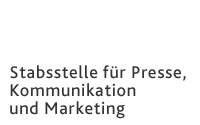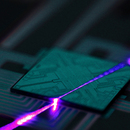Executive Department for
Press, Communication and Marketing
Adolf-Reichwein-Straße 2a Gebäude AVZ (Gebäudeteil AR-NA) 57068 Siegen
Phone: +49 (0)271/740-4915 Fax.: +49 (0)271/740-4911 E-Mail: presse@uni-siegen.de
Go-ahead for groundbreaking research project
€15.8 million in funding has been approved for the development a pioneering quantum computer for industry and science in the scope of the joint project MIQRO. The project is being coordinated at the University of Siegen.
An outstanding research success for the University of Siegen. The German Federal Ministry of Education and Research (BMBF) has approved the application for the joint project MIQRO, thereby giving the go-ahead for a groundbreaking research project with funding totaling €15.8 million. The city of Siegen's share amounts to €7.1 million. The project has a big goal: to develop a pioneering quantum computer based on high-frequency controlled ions. The cooperative research project between the University of Siegen, Leibniz University Hannover, Heinrich Heine University Düsseldorf, QUARTIC GmbH, and eleQtron GmbH as an associated partner is scheduled to run for 4 years and is being coordinated by Prof. Dr. Christof Wunderlich from the University of Siegen. Upon completion, the quantum computer developed and operated in the scope of the project will be scalable to a thousand quantum bits, paving the way for a variety of industrial and academic applications that go beyond the capabilities of conventional supercomputers.
"The Rectorate of the university shares Prof. Wunderlich's delight about this approval. This will firmly anchor an important and current research field at the University of Siegen. Not only are quantum optics and quantum information theory "hot topics" in basic scientific research, but they can also very easily serve as the developmental basis for applications like quantum computers, bringing revolutionary changes to our everyday lives – comparable to the development of the Internet," explains Prof. Dr. Thomas Mannel, Prorector for Research.
Superiority of quantum computers
Quantum computers are designed to handle problems which even today's most advanced supercomputers are not powerful enough to solve. In a quantum computer, information is stored and processed in quantum bits, or qubits, which can assume the values 0 and 1 simultaneously. Conventional computers work with classical bits that can only take on the values 0 or 1. This simultaneity, known as quantum parallelism, is a key feature of quantum computers. It enables them to efficiently solve complex problems that will always remain virtually unsolvable even for the best bit-based supercomputers. The potential applications for such computing power are manifold: The computation of highly complex issues is a persistent problem in the material sciences, chemistry and pharmacology, while logistics and finance deal with multifaceted optimization problems. Quantum computers promise far-reaching solutions for such fields.
Although some specific tasks can already be calculated with existing quantum computers, it has not yet been possible to tap their full potential. The key problem of current approaches is the scaling of existing systems to sizes that can solve computational problems that even the most state-of-the-art supercomputers and computer clusters are too slow to solve.
At the heart of the universal quantum computer envisioned here is an innovative quantum core module based on stored ions with up to 32 qubits, which forms the basic building block for a future quantum computer system. Using the module, a powerful quantum computer can be scaled up to a thousand qubits with no technological gaps. The novel approach of using radio frequency (RF) waves to control quantum logic operations not only has numerous advantages over superconducting systems targeted by such major players as Google and IBM, but also over conventional quantum computer designs based on ion traps, which are more difficult to scale due to their complex laser facilities. "The MAGIC concept employs stored ions to create perfectly reproducible qubits with highly reduced cooling requirements" explains Prof. Wunderlich. "It enables very easy-to-integrate high-frequency electronics for controlling qubits. Moreover, linking many qubits in a quantum core will enormously accelerate the executed quantum algorithms – with crosstalk between the qubits reduced to an unrivaled low."
For science and industry
The concepts, methods, and technologies developed in the MIQRO (i.e. scalable quantum computer with high-frequency controlled stored ions) will ultimately allow the realization of a thoroughly characterized, freely programmable quantum computer with up to 32 high-quality qubits. After the end of the project, the quantum computer will be operated in Siegen and made available online for users from science and industry. In addition, it will form the foundation for a future quantum computer system that will be scalable up to a thousand qubits without technological gaps, thereby enabling new applications for industry and academic research.
Associated partner eleQtron GmbH will already start the industrial evaluation of the designed platform during the research project. Plans include, for example, the extension of the developed technology into a processor with multiple cores in cooperation with the partners of the consortium. The aim is to bring a quantum computer with true quantum superiority to market maturity that can be made available to industrial customers and users from the public sector. This will not only pave the way for novel and innovative products of the future, but also strengthen Germany and Europe as business locations.
Project partners
The joint project is designed to make optimal use of the expertise of the participating joint partners. For example, the conceptual basis for the execution of the quantum logic operations envisaged for the project, Magnetic Gradient Induced Coupling (MAGIC), was developed and demonstrated at the University of Siegen. Together with the Institute of Quantum Optics at Leibniz University Hannover and under the leadership of Prof. Dr. Christian Ospelkaus, the chips are now to be specified and developed, extending the proven MAGIC method to accommodate new high-performance, microstructured ion traps. This will put LUH's innovative microfabrication processes and experience with ion trap fabrication to use for the joint project.
With experts in the field of the measurement and reconstruction of quantum states, Prof. Dr. Martin Kliesch from Heinrich Heine University Düsseldorf is the ideal partner on the theoretical side to develop and implement the necessary characterization and verification methods. For the electronic control systems for the systems, MIQRO relies on the leading developments of QUARTIC GmbH, led by Dr. Robert Jördens. QUARTIC's control software platforms ARTIQ and Sinara are already used by research groups worldwide to control quantum technologies and to cover a broad profile of requirements using industrial-grade components.


